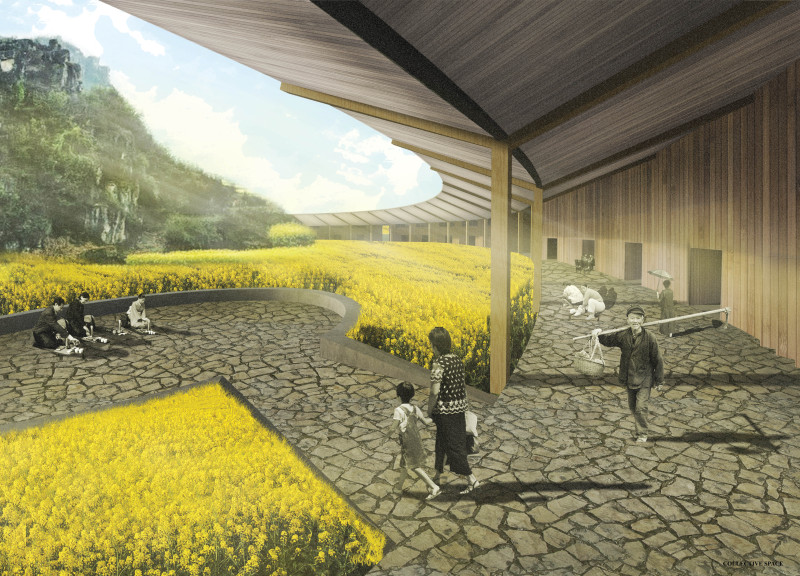5 key facts about this project
A defining aspect of the project is its commitment to sustainability and the use of environmentally friendly materials. The selection of materials is pivotal to the project's overall identity. Among the materials utilized are exposed concrete, which provides structural integrity and a raw aesthetic; warm timber, which introduces a sense of comfort and invites natural warmth into the space; and high-performance glazing that maximizes natural light while ensuring energy efficiency. This combination of materials not only contributes to the visual appeal but also speaks to contemporary demands for sustainability in architecture.
Details of the design reveal a clear articulation of space, with open floor plans that encourage fluid movement throughout the interior. Large windows and strategic openings facilitate a dialogue between indoor and outdoor spaces, enhancing the overall living experience. Courtyards or terraces that may be incorporated into the design further blur the boundaries between the built environment and nature, allowing occupants to engage with the natural surroundings directly. This connection to the exterior is a hallmark of modern architectural practices, reinforcing a sense of well-being and grounding.
The project also reflects a thoughtful approach to scale and proportion, ensuring that it feels both intimate and expansive. Careful attention is given to the circulation paths, which are thoughtfully considered to enhance accessibility while maintaining a sense of privacy in personal spaces. This aspect is particularly important in projects that aim to foster community interaction without sacrificing individual comfort.
Unique design approaches are evident throughout the project, such as the use of modular elements that can adapt to the needs of various users. This flexibility not only speaks to the changing dynamics of contemporary living but also positions the project as a forward-thinking solution in an ever-evolving urban landscape. Elements like multifunctional furniture and integrated smart technology may further enhance the user experience, positioning the architecture as both versatile and innovative.
Landscaping considerations are equally important to the overall design. Landscaping typically complements the architecture, featuring native plant species that not only support local biodiversity but also require minimal maintenance. The integration of green roofs or living walls can enhance thermal performance and contribute to stormwater management, demonstrating a comprehensive understanding of ecological design principles.
Throughout this architectural project, one can observe a conscious effort to honor the context in which it sits. Whether located in an urban or rural setting, the design responds to its environment, ensuring that it complements rather than disrupts the local character. This thoughtful engagement with the site fosters a sense of belonging and community, which is increasingly relevant in today’s architectural discourse.
Ultimately, this project stands as a testament to the evolving narrative of architecture, where design efficiency, environmental responsibility, and user-oriented spaces converge. Readers interested in exploring this project further are encouraged to delve into the architectural plans, sections, and comprehensive designs, to gain deeper insights into the myriad ideas and innovative solutions that define this architectural endeavor.


























